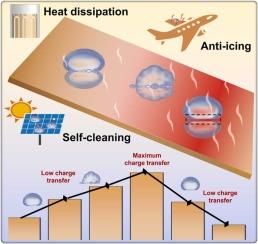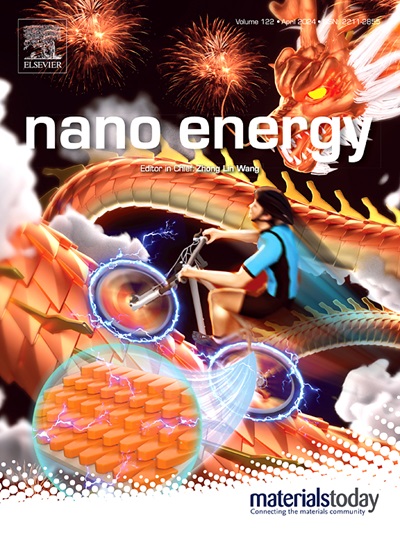Probing Leidenfrost effect via contact electrification
IF 16.8
1区 材料科学
Q1 CHEMISTRY, PHYSICAL
引用次数: 0
Abstract
Droplet dynamics and liquid-solid (L-S) interactions at elevated temperatures hold significant relevance across various industrial applications, particularly in materials design and aerospace. The Leidenfrost effect, which generates a vapor layer above a critical temperature and effectively prevents direct contact between the droplet and the heated substrate, has been extensively used in surface engineering and thermal protection. Nevertheless, the L-S interfacial properties and charge transfer at high temperatures, especially near the Leidenfrost point (LFP), have been largely neglected in past studies. This study integrated L-S contact electrification (CE) with the Leidenfrost effect, elucidating their intrinsic connection for the first time. Notably, the observation that transferred charge peaks near the LFP not only provided new theoretical insights into the temperature modulation of L-S interface properties but also presented a rapid, objective method for determining the LFP using CE as a probe. This approach holds the potential to enhance thermal management systems, improve heat dissipation in electronic devices, advance surface treatment and self-cleaning technologies, and optimize the efficiency of high-temperature self-powered equipment.

通过接触电气化探测莱顿弗罗斯特效应
液滴动力学和液固(L-S)在高温下的相互作用在各种工业应用中具有重要的相关性,特别是在材料设计和航空航天领域。莱顿弗罗斯特效应(Leidenfrost effect)在临界温度以上产生蒸汽层,有效地防止液滴与被加热的基片直接接触,已广泛应用于表面工程和热防护。然而,在过去的研究中,L-S界面性质和高温下的电荷转移,特别是在Leidenfrost点(LFP)附近,在很大程度上被忽视了。本研究将L-S接触电气化(CE)与Leidenfrost效应结合起来,首次阐明了它们之间的内在联系。值得注意的是,LFP附近转移电荷峰的观察不仅为L-S界面性质的温度调制提供了新的理论见解,而且为使用CE作为探针确定LFP提供了一种快速、客观的方法。这种方法有可能增强热管理系统,改善电子设备的散热,推进表面处理和自清洁技术,并优化高温自供电设备的效率。
本文章由计算机程序翻译,如有差异,请以英文原文为准。
求助全文
约1分钟内获得全文
求助全文
来源期刊

Nano Energy
CHEMISTRY, PHYSICAL-NANOSCIENCE & NANOTECHNOLOGY
CiteScore
30.30
自引率
7.40%
发文量
1207
审稿时长
23 days
期刊介绍:
Nano Energy is a multidisciplinary, rapid-publication forum of original peer-reviewed contributions on the science and engineering of nanomaterials and nanodevices used in all forms of energy harvesting, conversion, storage, utilization and policy. Through its mixture of articles, reviews, communications, research news, and information on key developments, Nano Energy provides a comprehensive coverage of this exciting and dynamic field which joins nanoscience and nanotechnology with energy science. The journal is relevant to all those who are interested in nanomaterials solutions to the energy problem.
Nano Energy publishes original experimental and theoretical research on all aspects of energy-related research which utilizes nanomaterials and nanotechnology. Manuscripts of four types are considered: review articles which inform readers of the latest research and advances in energy science; rapid communications which feature exciting research breakthroughs in the field; full-length articles which report comprehensive research developments; and news and opinions which comment on topical issues or express views on the developments in related fields.
文献相关原料
公司名称
产品信息
阿拉丁
Sodium chloride (NaCl)
 求助内容:
求助内容: 应助结果提醒方式:
应助结果提醒方式:


